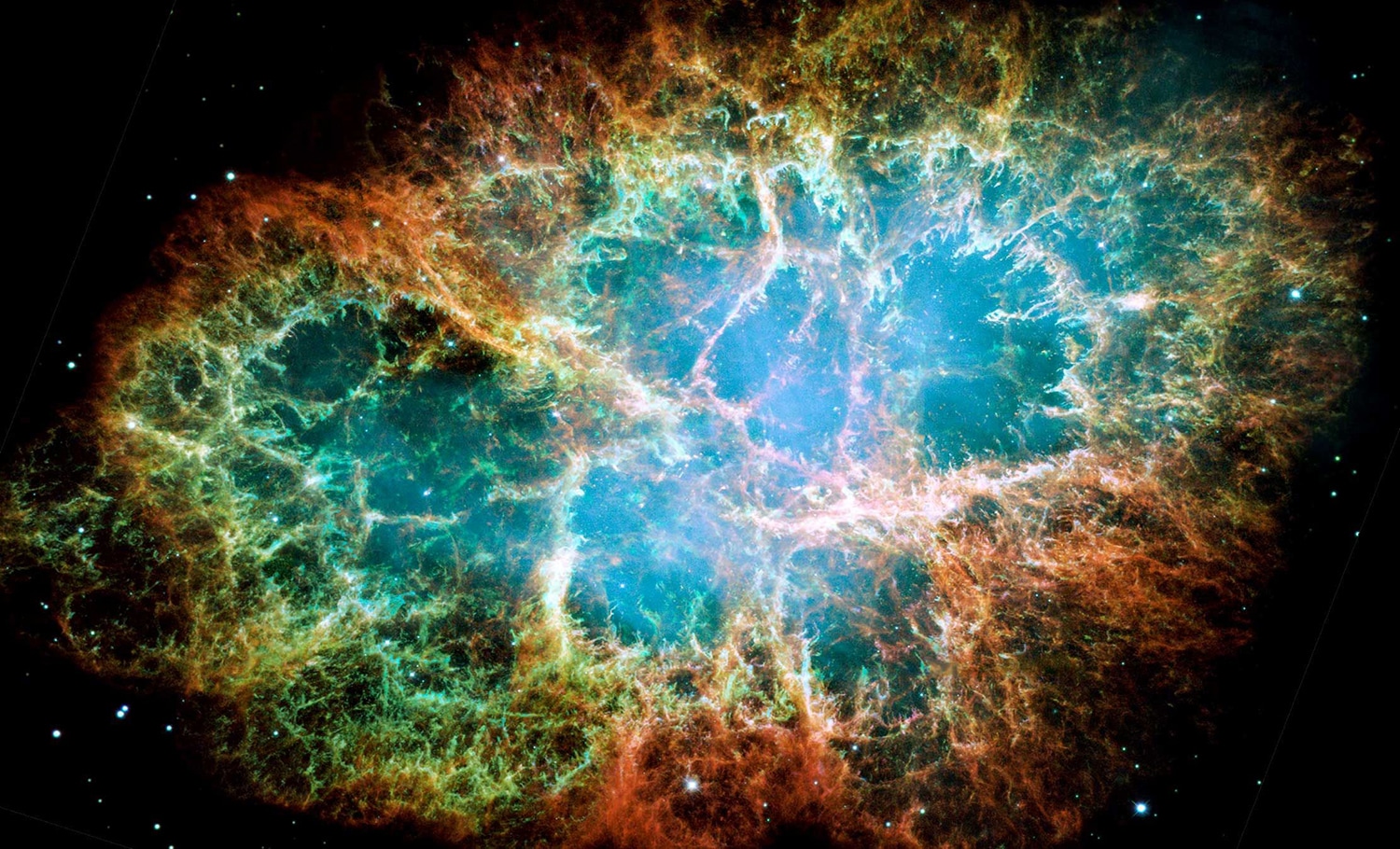
A neutron star can rotate several times per second, and its whirling magnetic field prompts beams of radio waves, visible light, X-rays, and gamma rays. When these beams sweep past Earth, astronomers observe clock-like pulses of emission and classify the object as a pulsar.
Until now, astronomers have observed 2,800 pulsars. Among all observed pulsars, the crab pulsar emits powerful and giant radio pulses.
In a new study, astronomers used data from NASA‘s Neutron star Interior Composition Explorer (NICER) telescope. They found that the powerful burst emitted by the Crab pulsar is far more energetic than previously suspected.
Lead scientist Teruaki Enoto at the RIKEN Cluster for Pioneering Research in Wako, Saitama prefecture, Japan, said, “Giant radio pulses, which occur sporadically can be hundreds to thousands of times brighter than the regular pulses. After decades of observations, only the Crab has been shown to enhance its giant radio pulses with emission from other parts of the spectrum.”
In the study, astronomers analyzed the largest amount of simultaneous X-ray and radio data ever collected from a pulsar. It extends the observed energy range associated with this enhancement phenomenon by thousands of times.
Credits: NASA’s Goddard Space Flight Center/Enoto et al. 2021
During August 2017 and August 2019, astronomers used NICER to observe the Crab pulsar repeatedly. Along with NICER, astronomers also used at least one of two ground-based radio telescopes in Japan—the 34-meter dish at the Kashima Space Technology Center and the 64-meter dish at the Japan Aerospace Exploration Agency’s Usuda Deep Space Center, both operating at a frequency of 2 gigahertz.
By combining datasets, astronomers got a day and a half of simultaneous X-ray and radio coverage. Considering all things, they captured activity across 3.7 million pulsar rotations and netted some 26,000 giant radio pulses.
Zaven Arzoumanian, the project’s science lead at NASA’s Goddard Space Flight Center in Greenbelt, Maryland, said, “NICER’s capacity for observing bright X-ray sources is nearly four times greater than the combined brightness of both the pulsar and its nebula. So these observations were largely unaffected by pileup—where a detector counts two or more X-rays as a single event—and other issues that have complicated earlier analyses.”
Combining comprehensive X-ray data that coincided with giant radio pulses revealed an X-ray boost of about 4% that occurred in synch with them. It’s remarkably similar to the 3% rise in visible light associated with the phenomenon, discovered in 2003. Compared to the brightness difference between the Crab’s regular and giant pulses, these changes are remarkably small and provide a challenge for theoretical models to explain.
The enhancements suggest that giant pulses manifest underlying processes that produce emission spanning the electromagnetic spectrum, from radio to X-rays. And because X-rays pack millions of times the punch of radio waves, even a modest increase represents a large energy contribution.
Enoto said, “We still don’t understand how or where pulsars produce their complex and wide-ranging emission, and it’s gratifying to have contributed another piece to the multiwavelength puzzle of these fascinating objects.”
Journal Reference:
- Teruaki Enoto et al. Enhanced x-ray emission coinciding with giant radio pulses from the Crab Pulsar. DOI: 10.1126/science.abd4659
April 09, 2021 at 10:26PM
https://ift.tt/3wJQp4P
Radio pulses from Crab Pulsar release far more energy than previously suspected - Tech Explorist
https://ift.tt/2MkGRbk
Crab

No comments:
Post a Comment